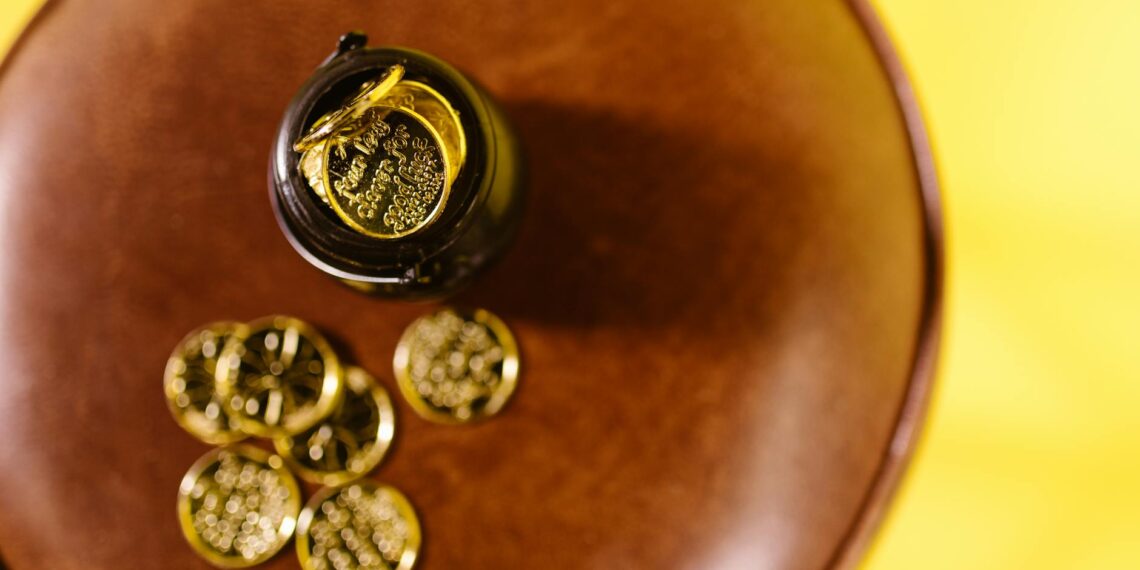The terms “bullion” and “coin” are often used interchangeably, but there are important distinctions, particularly when considering investment and collecting.
Here’s a breakdown of the key differences:
- Definition: Bullion refers to precious metals (like gold, silver, or platinum) in bulk form, valued primarily for their metal content and purity. It can come in bars, rounds, or coins.
- Purpose: Primarily an investment vehicle and a hedge against inflation or economic uncertainty. Investors buy bullion for the intrinsic value of the metal itself.
- Value: Directly tied to the current market price (spot price) of the precious metal it contains. Factors like global economic stability, supply and demand, and US dollar strength significantly impact its value.
- Premiums: Bullion bars and rounds generally have lower premiums (markups over the spot price) because their production is simpler and less focused on intricate designs. Bullion coins may have slightly higher premiums due to the government minting process and potential collectibility, [according to APMEX].
- Storage & Liquidity: Generally easy to store, especially bars which can be stacked efficiently. Highly liquid, meaning they are easily bought and sold at or near the current market price.
- Definition: Coins are typically small, flat, round pieces of metal produced by a mint for use as currency or collector’s items.
- Types: There are two main types:
– Bullion Coins: These are government-minted coins primarily valued for their precious metal content, though they also have a nominal face value and guaranteed weight and purity. Examples include the American Gold Eagle and Canadian Gold Maple Leaf.
– Numismatic Coins: Valued for factors beyond their metal content, such as rarity, age, historical significance, condition, and appearance. Their value can greatly exceed the metal’s worth.
- Purpose: Bullion coins are mainly for investment, while numismatic coins are for collecting and historical interest.
- Value: Bullion coin value is mainly tied to the spot price of the metal, while numismatic coin value depends on factors like rarity, demand, condition, age, and historical importance.
- Premiums: Numismatic coins often have high premiums due to their collectibility and rarity.
- Storage & Liquidity: Bullion coins are highly liquid and easy to store. Numismatic coins can have lower liquidity as finding a buyer willing to pay a premium may take time, and careful storage is needed to preserve their condition.
- Bullion is primarily an investment in the intrinsic value of precious metal.
- Coins include bullion coins , valued mostly for their metal content, and numismatic coins , valued for historical and collectible reasons.
The choice between bullion and coins depends on your goals. For pure metal investment, bullion bars or rounds may be suitable. For historical interest, artistry, and potential for higher appreciation (with potentially higher risk and lower liquidity), numismatic coins are an option. Some investors hold both.











What is the difference between a coin and bullion?
Collectible coins are purchased by enthusiasts who appreciate the pieces’ unique qualities beyond metal value. In contrast, bullion is favored by those seeking a tangible, easily traded asset whose value directly corresponds to the metal’s current market price.
Is it better to buy coins or bullion?
There’s a key difference between bullion and collectible coins: bullion coins (especially those minted after the 1930s) have lower premiums and their value is mostly based on gold content, making them more cost-effective for investment.
How can you tell if a coin is bullion?
Good point! A bullion coin is distinguished by its weight (or mass) and fineness on the coin. Unlike rounds, bullion coins are minted by government mints and have a legal tender face value. Bullion coins can have fineness ranging from 91.9% (22 karat) to 99.99% purity (24 karat).
Is a gold coin considered bullion?
Gold bullion is a general term that includes both bars and coins. It’s all about the purity and weight of the gold.